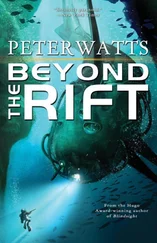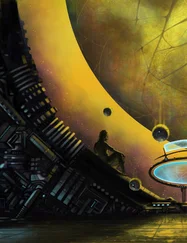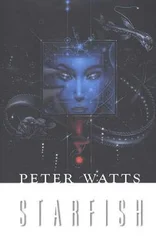Baars, B.J. 1988. A Cognitive Theory of Consciousness. Cambridge Univ. Press, New York.
Hilgetag, C.C. 2004. Learning from switched-off brains. Sci. Amer. 14: 8-9.
Roth, G. 2004. The quest to find consciousness. Sci. Amer. 14: 32-39.
Pauen, M. 2004. Does free will arise freely? Sci. Amer. 14: 41-47.
Zimmer, C. 2003. How the mind reads other minds. Science 300:1079-1080.
Crick, F.H.C., and C. Koch. 2000. The unconscious homunculus. In Neural Correlates of Consciousness—Empirical and Conceptual Questions (T. Metzinger, Ed.) MIT Press, Cambridge.
Churchland, P.S. 2002. Self-Representation in Nervous Systems. Science 296: 308-310.
Miller, G. 2005. What is the biological basis of consciousness? Science 309: 79.
Blakeslee, S. 2003. The christmas tree in your brain. Toronto Star , 21/12/03.
Matsumoto, K., and K. Tanaka. 2004. Conflict and Cognitive Control. Science 303: 969-970.
Kerns, J.G., et al. 2004. Anterior Cingulate Conflict Monitoring and Adjustments in Control. Science 303: 1023-1026.
Petersen, S.E. et al. 1998. The effects of practice on the functional anatomy of task performance. Proceedings of the National Academy of Sciences 95: 853-860.
Zimmer, C. 2003. How the mind reads other minds. Science 300:1079-1080.
Norretranders, T. 1999. The User Illusion: Cutting Consciousness Down to Size. Penguin Press Science. 467pp.
Altenmüller, E.O. 2004. Music in your head. Scientific American. 14: 24-31.
Pinker, S. 1997. How the mind works. WW Norton & Co., NY. 660pp.
Matsumoto, K., and K. Tanaka. 2004. Conflict and Cognitive Control. Science 303: 969-970.
Helmuth, L. 2003. Fear and Trembling in the Amygdala. Science 300: 568-569.
Dolan, R.J. 2002. Emotion, cognition, and behavior. Science 298: 1191-1194.
Treffert, D.A., and G.L. Wallace. 2004. Islands of genius. Scientific American 14: 14-23.
Anonymous., 2004. Autism: making the connection. The Economist , 372(8387): 66.
Wegner, D.M. 1994. Ironic processes of mental control. Psychol. Rev. 101: 34-52.
Proceedings of the Royal Society of London B (DOI 10.1098/rspb.2003.2548).
Aiello, L., and C. Dean. 1990. An introduction to human evolutionary anatomy. Academic Press, London.
Gallup, G.G. (Jr.). 1997. On the rise and fall of self-conception in primates. In The Self Across Psychology—self-recognition, self-awareness, and the Self Concept. Annals of the NY Acad. Sci. 818:4-17.
Hauser, M.D., N. Chomsky, and W.T. Fitch. 2002. The faculty of language: what is it, who has it, and how did it evolve? Science 298: 1569-1579.
Carstairs-McCarthy, A. 2004. Many perspectives, no concensus—a review of Language Evolution , by Christiansen & Kirby (Eds). Science 303:1299-1300.
Dijksterhuis, A., et al. 2006. Science 311:1005-1007.
Vince, G 2006. “’Sleeping on it’ best for complex decisions.” Newscientist.com, http://www.newscientist.com/article/dn8732-sleeping-on-it-best-for-complex-decisions.html.
Devlin, A.M., et al. 2003. Clinical outcomes of hemispherectomy for epilepsy in childhood and adolescence Brain 126: 556-566.
Pulsifer, M,B., et al. 2004. The cognitive outcome of hemispherectomy in 71 children. Epilepsia 45: 243-54.
Moles, A., Keiffer, B.L., and F.R. D’Amato. 2004. Deficit in attachment behavior in mice lacking the μ-Opioid receptor gene. Science 304: 1983-1986.
Plane, J.M.C., et al. 2004. Removal of meteoric iron on polar mesospheric clouds. Science 304: 426-428.
Hauser, M.D., N. Chomsky, and W.T. Fitch. 2002. The faculty of language: what is it, who has it, and how did it evolve? Science 298: 1569-1579.
Fitch, W.T., and M.D. Hauser. 2004. Computational Constraints on Syntactic Processing in a Nonhuman Primate. Science 303:377-380.
Premack, D. 2004. Is Language the Key to Human Intelligence? Science 303: 318-320.
Holden, C. 2004. The origin of speech. Science 303: 1316-1319.
Graddol, D. 2004. The future of language. Science 303: 1329-1331.
BBC News. 2005. Brain chip reads man’s thoughts. March 31. Story online at http://news.bbc.co.uk/go/pr/fr/-/1/hi/health/4396387.stm.
146. Weng, J. et al. 2001. Autonomous Mental Development by Robots and Animals. Science 291: 599-600.
Von Melchner, L, et al. 2000. Visual behaviour mediated by retinal projections directed to the auditory pathway. Nature 404: 871-876.
Baughman, R.H. 2003. Muscles made from metal. Science 300: 268-269.
Weissmüller, J., et al. 2003. Change-induced reversible strain in a metal. Science 300: 312-315.
Piper, A., and Merskey, H. 2004. The Persistence of Folly: A Critical Examination of Dissociative Identity Disorder. Part I. The Excesses of an Improbable Concept. Can. J. Psychiatry 49: 592-600.
Piper, A., and Merskey, H. 2004. The Persistence of Folly: A Critical Examination of Dissociative Identity Disorder. Part II. The Defence and Decline of Multiple Personality or Dissociative Identity Disorder. Can. J. Psychiatry 49: 678–683.
Kaplan, F.S., et al. 1998. The Molecules of Immobility: Searching for the Skeleton Key. Univ. Pennsylvania Orthopaedic J. 11: 59-66. Available online at http://www.uphs.upenn.edu/ortho/oj/1998/oj11sp98p59.html. [This link is gone. The article is now available as a PDF file here: http://www.upoj.org/site/files/v11/v11_12.pdf. More recent information can be found in this news release: http://www.uphs.upenn.edu/news/News_Releases/apr06/FOP.htm- update by EH, 2011-07-13 ].
Chernoff, H. 1973. Using faces to represent points in k-dimensional space graphically. Journal of the Americal Statistical Association 68:361-368.
Wilkinson, L. 1982. An experimental evaluation of multivariate graphical point representations. Human Factors in Computer Systems: Proceedings . Gaithersberg, MD, 202-209.
Читать дальше








